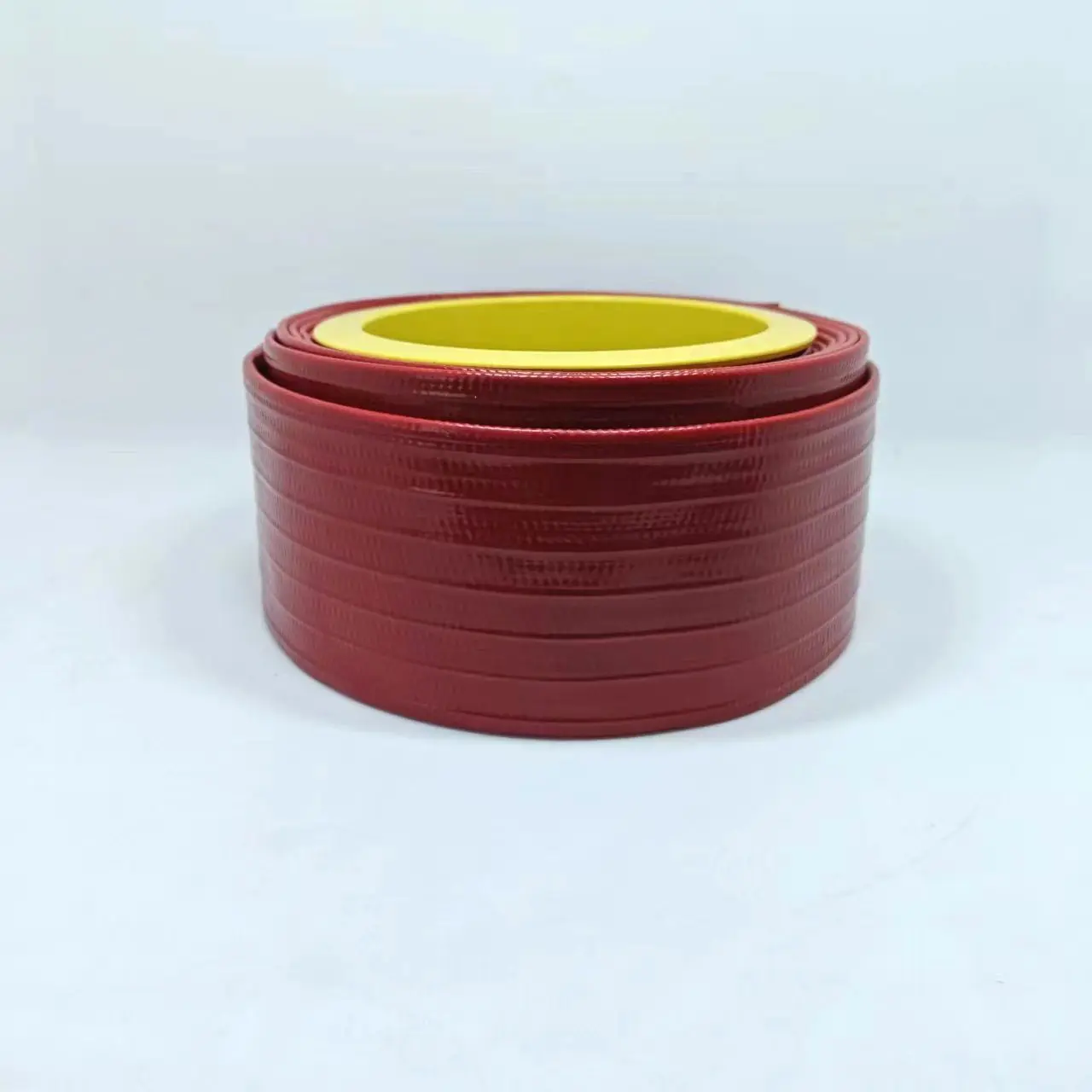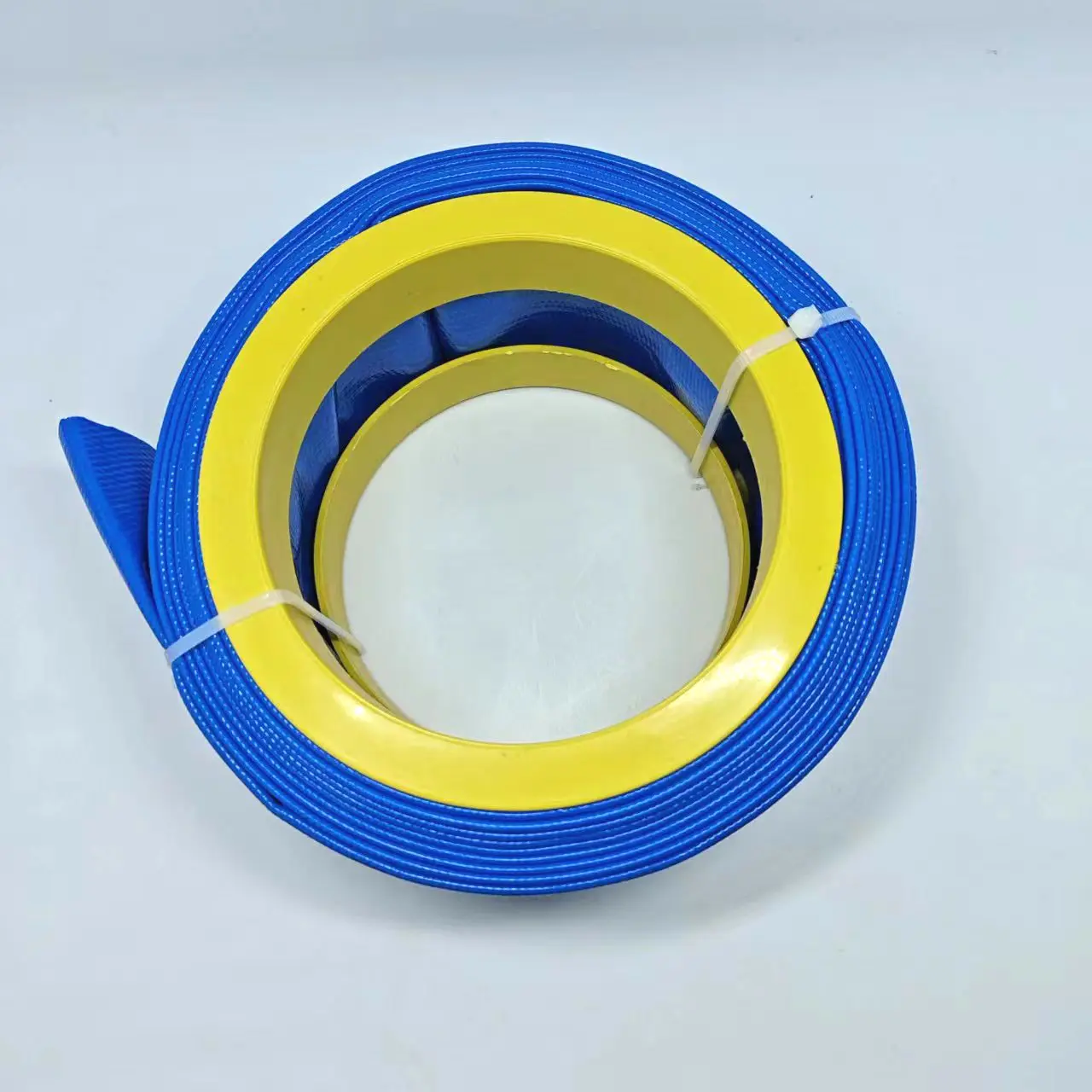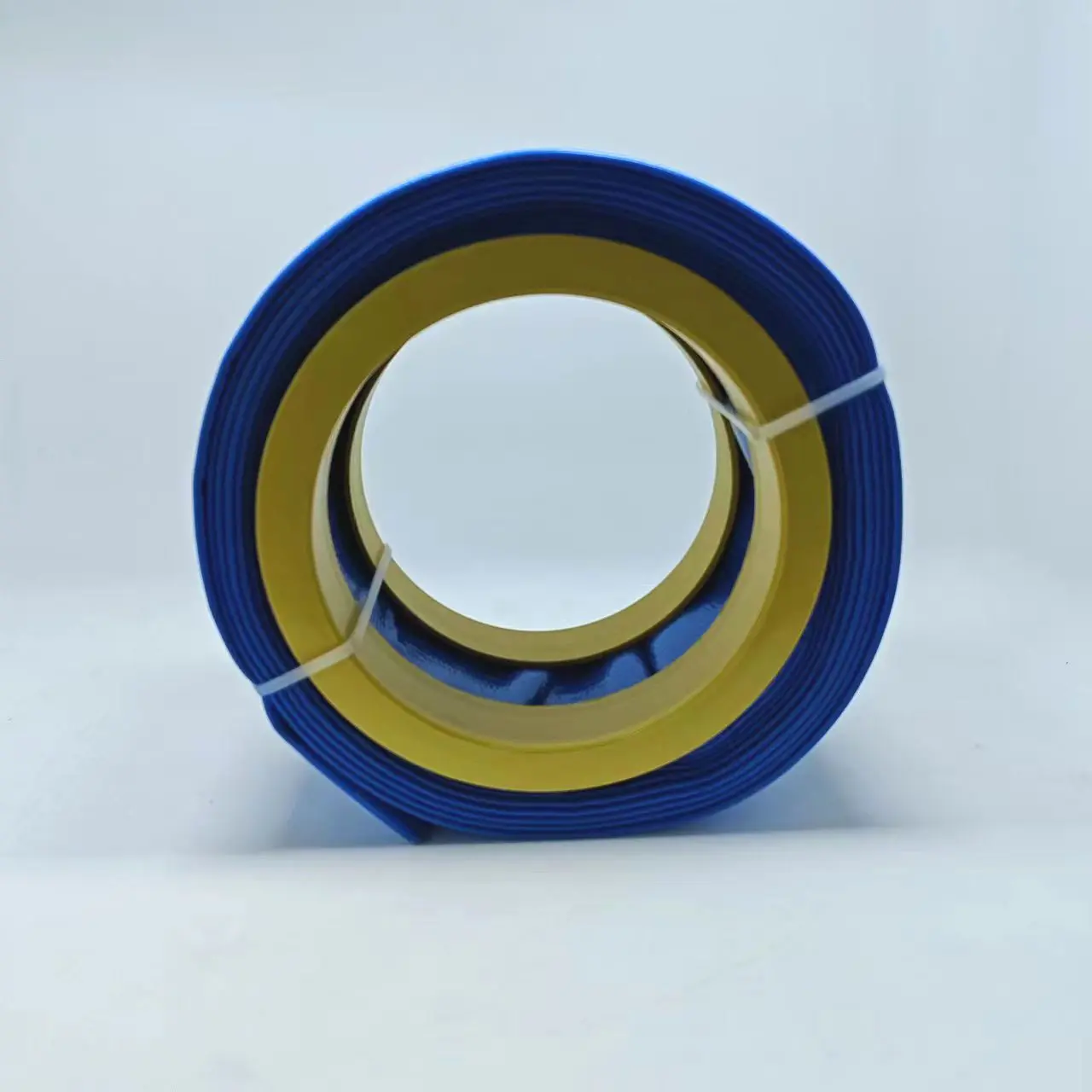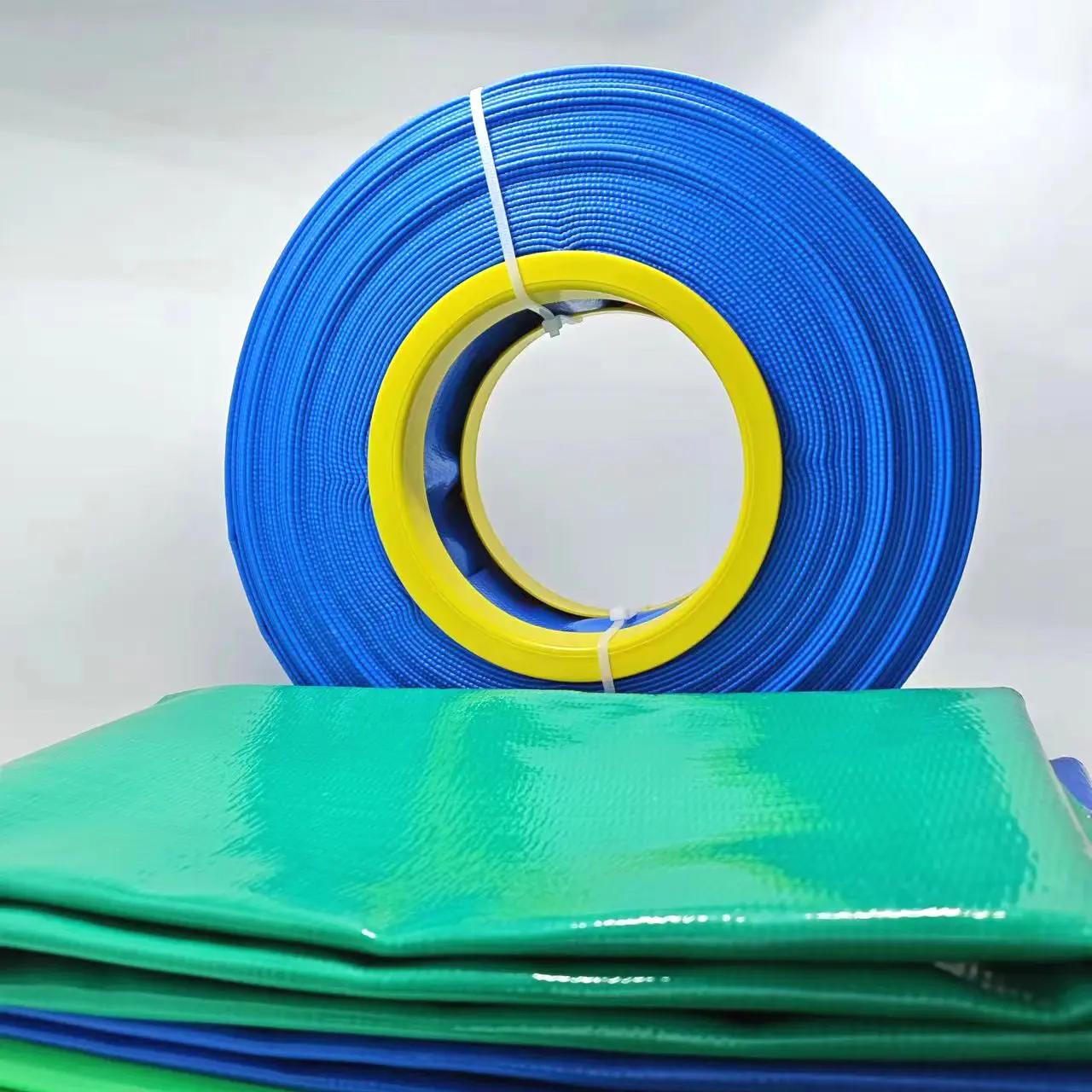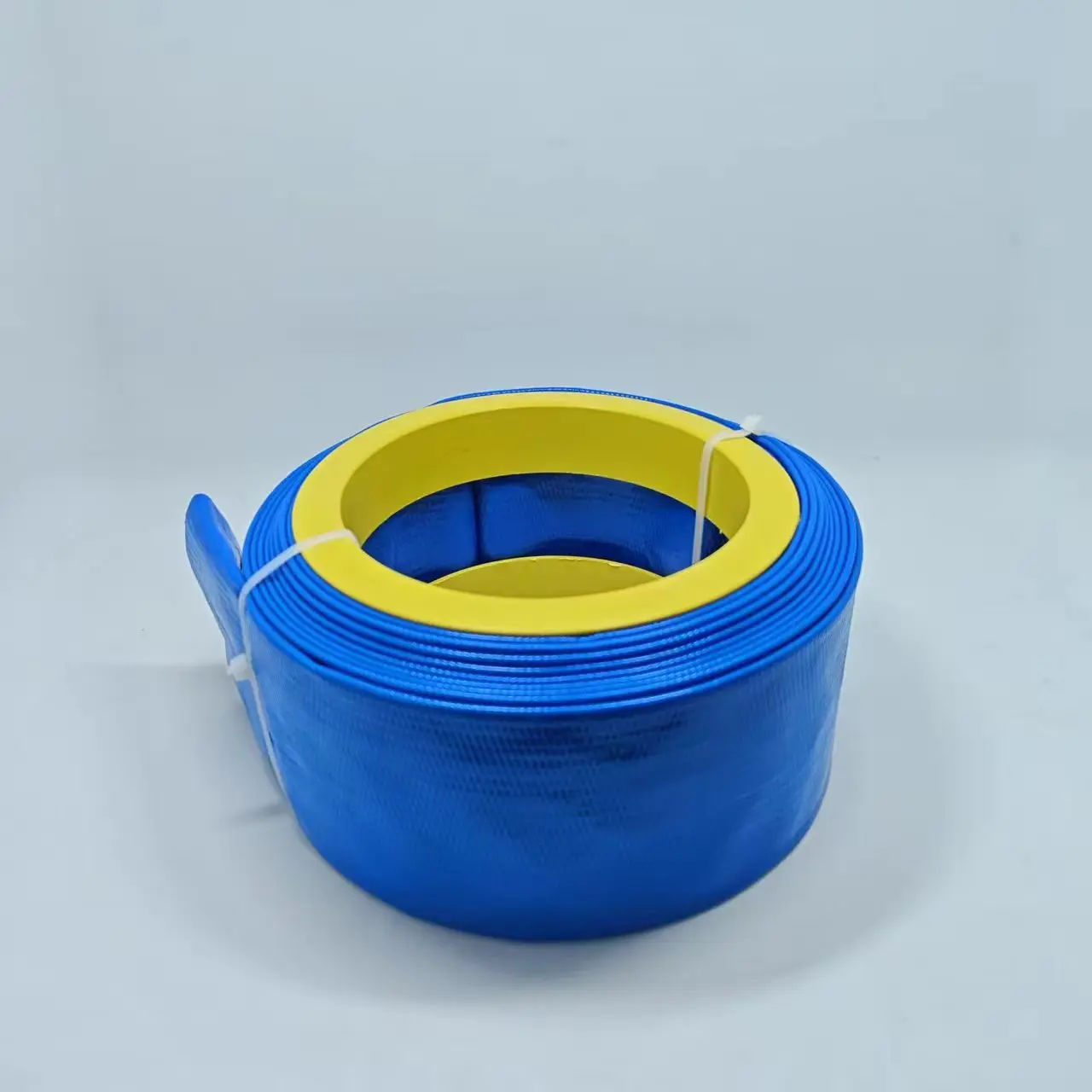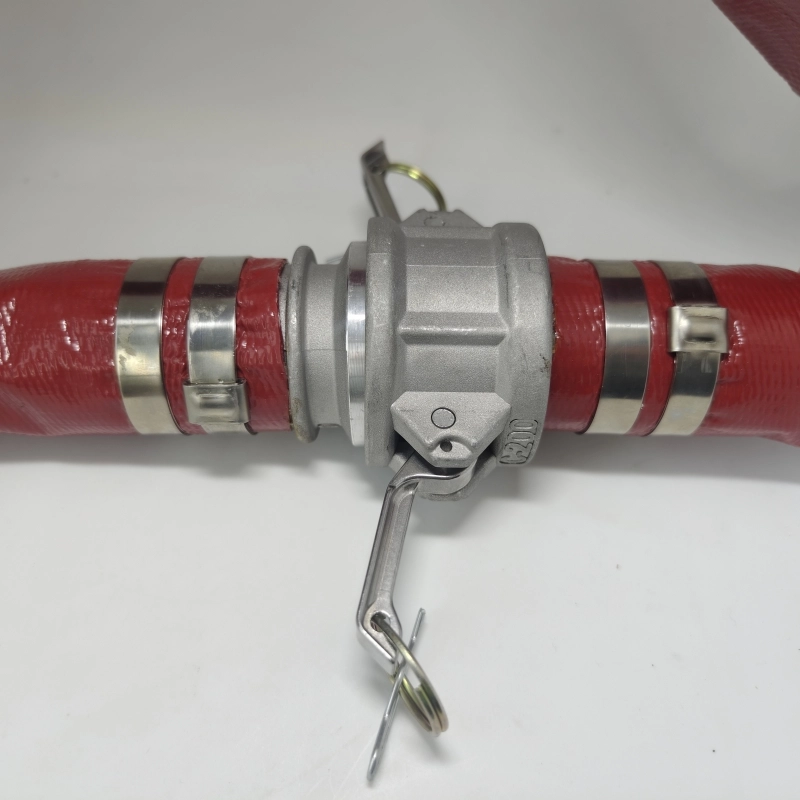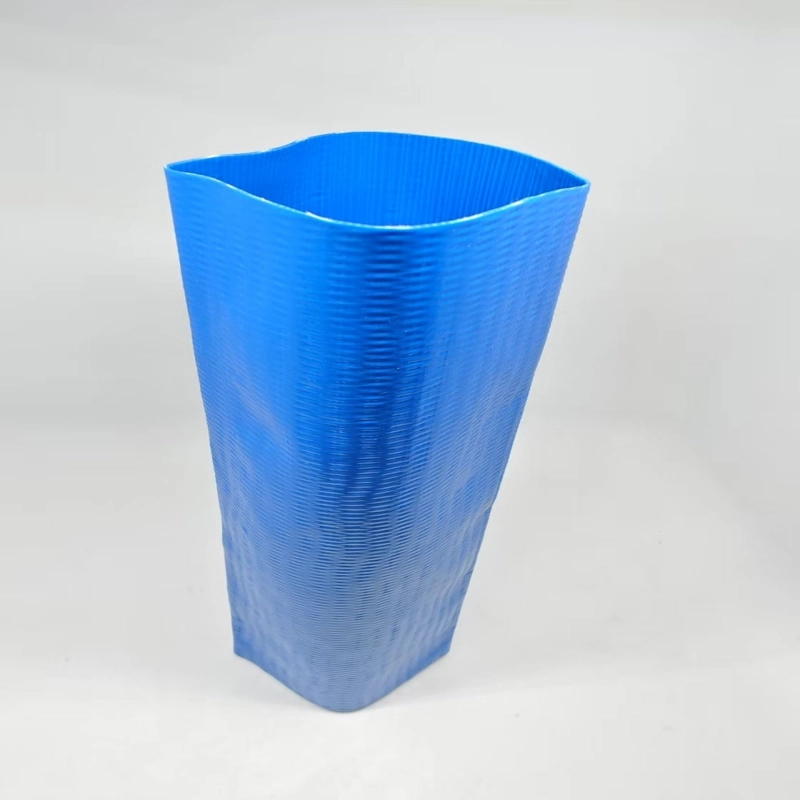Product Overview
PVC Layflat Hose is a lightweight, flexible, and easy-to-store hose widely used in agricultural irrigation, drainage, and temporary water supply at construction sites. Made from polyvinyl chloride (PVC), this hose offers excellent flexibility and abrasion resistance, making it suitable for temporary or seasonal water transfer needs.
Compared to traditional rubber hoses or rigid PVC pipes, PVC Layflat Hose can be folded flat when not in use, saving storage space and facilitating transportation. Its flat design makes it easy to lay out, especially in situations requiring frequent movement or temporary installation.
This hose is suitable for transferring clean or slightly turbid water but is not recommended for high-temperature liquids or fluids containing sharp debris. Its lightweight design allows for easy handling by a single person, making it ideal for various environments such as farms, gardens, and construction sites.
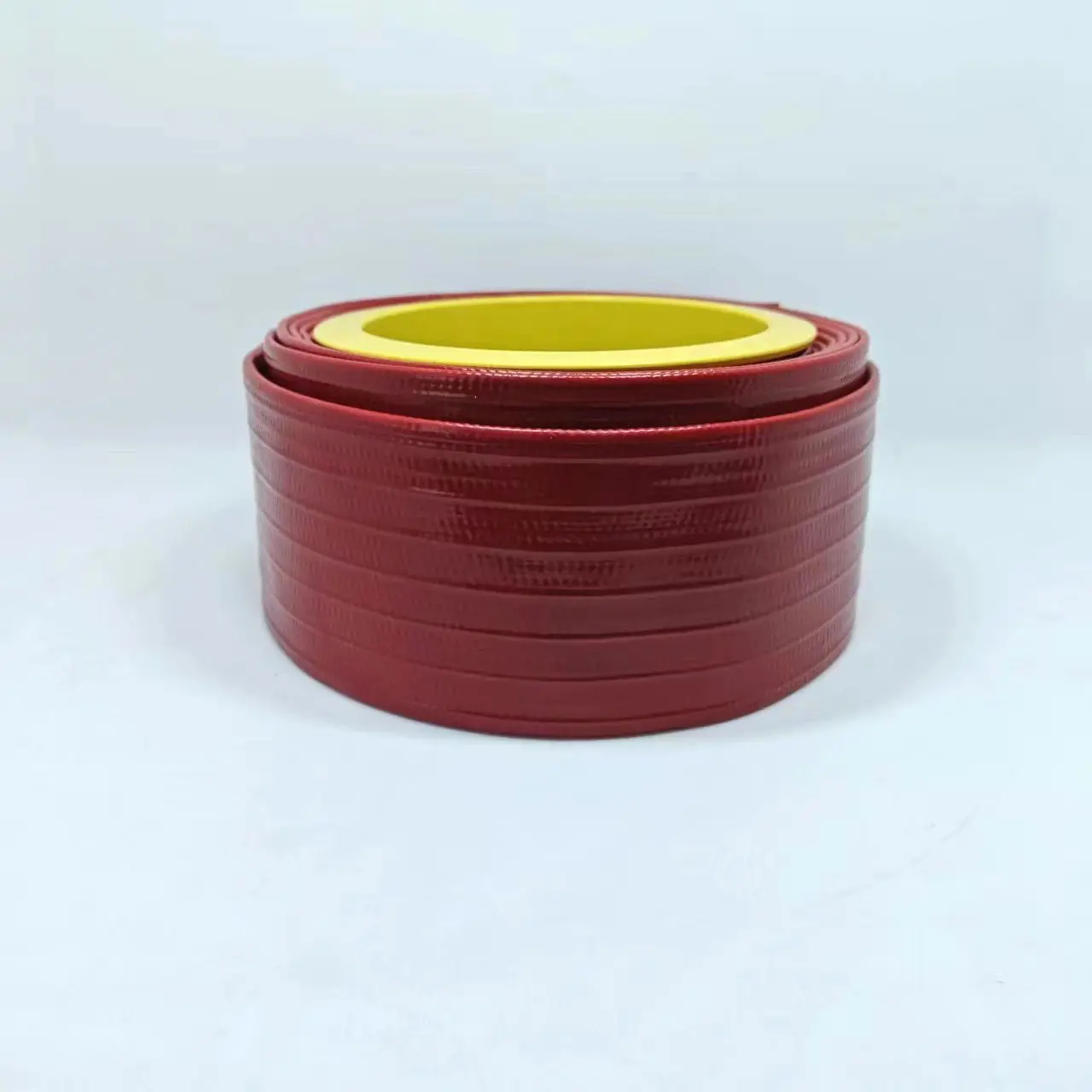
Product Features
(1) Lightweight and Easy to Transport
PVC Layflat Hose is lighter than traditional rubber hoses, making it easier to carry and lay out, particularly in scenarios requiring frequent relocation, such as farm irrigation or temporary drainage.
(2) Foldable for Compact Storage
After use, the hose can be flattened and folded, occupying minimal space for convenient storage and transport. This feature is ideal for seasonal use or temporary projects.
(3) Excellent Flexibility
The hose bends easily without kinking, allowing it to adapt to various terrains such as slopes or ditches.
(4) Wear and Pressure Resistance
While not suitable for high-pressure applications, the hose offers decent abrasion resistance for standard water transfer tasks, enduring moderate ground friction and pulling.
(5) Easy Installation
No specialized tools are required—simply unroll the hose and connect it to a water source for immediate use, making it ideal for quick deployment.
(6) Cost-Effective
Compared to other types of hoses, PVC Layflat Hose is more affordable, offering a budget-friendly solution for reliable water transfer.
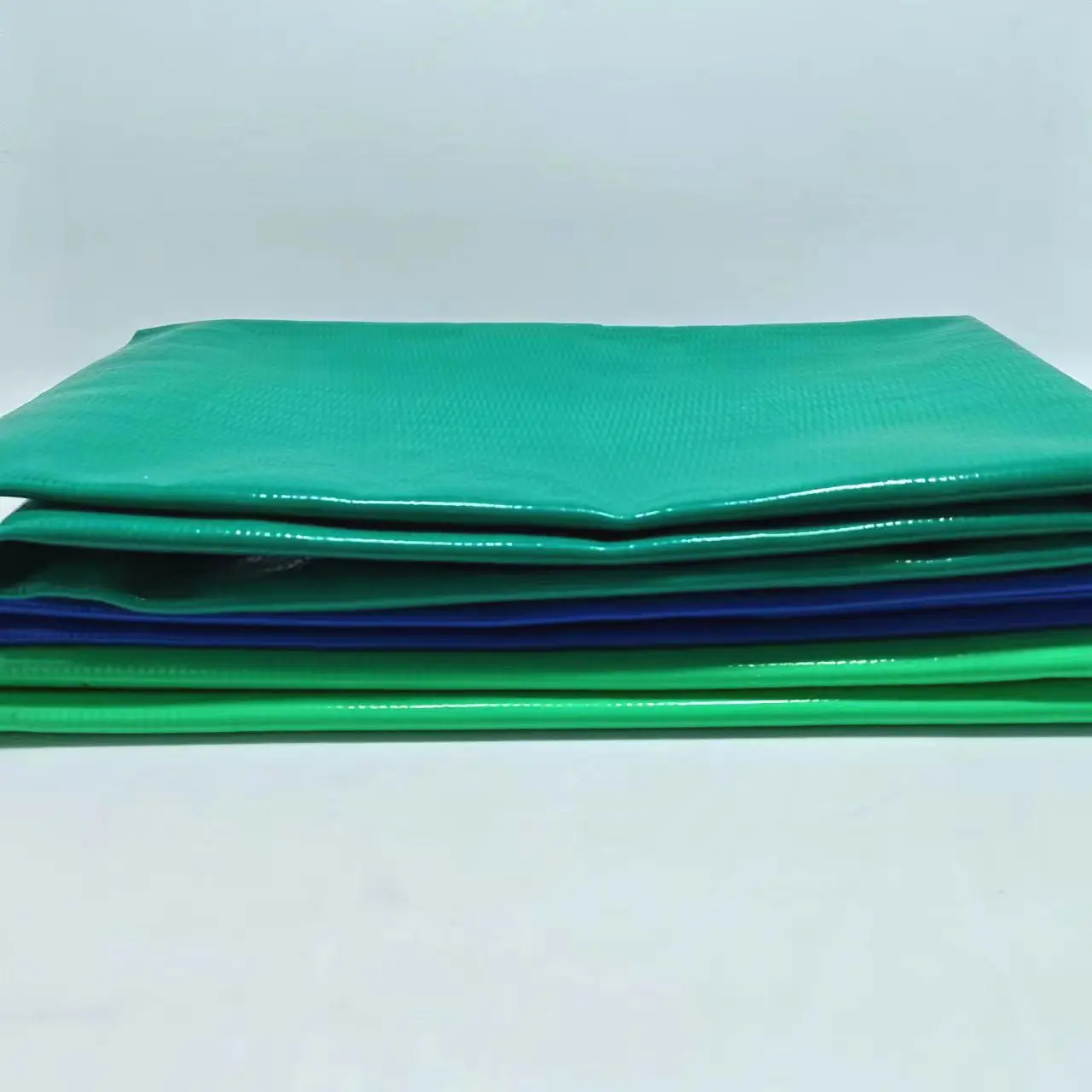
Common Applications
1. Agricultural Irrigation
Field crop irrigation: Ideal for seasonal watering of crops like corn and wheat, allowing quick deployment over hundreds of meters
Orchard watering: Can be arranged in circles around fruit trees for precise irrigation
Greenhouse use: Its lightweight nature makes it perfect for mobile use inside greenhouses
Nursery seedling cultivation: The flexible hose won't crush young plants and can be laid between seedling beds
2. Construction Applications
Foundation dewatering: Used for pit drainage operations, easily relocated as work progresses
Concrete curing: Laid flat on newly poured concrete surfaces for watering maintenance
Temporary water supply: Connects to pumps to provide water at various construction points
Slurry transfer: Suitable for low-concentration construction slurries without sharp particles
3. Municipal Engineering
Road dust suppression: Temporarily installed on water trucks for street spraying
Greenbelt irrigation: Replaces fixed piping systems in urban landscaping
Emergency drainage: Used for urgent water removal in low-lying areas during heavy rain
Pipe flushing: Serves as an auxiliary tool for municipal pipe maintenance
4. Landscaping
Fountain system setup: Ideal water supply for temporary water features
Lawn irrigation: Can be hidden beneath turf for subsurface watering
Flower beds: Won't disrupt delicate floral arrangements
Golf courses: Suitable for irrigation points requiring frequent adjustments
5. Industrial Uses
Equipment cooling water circulation: Short-term cooling water supply for production machinery
Facility cleaning: Regular washing of factory grounds
Aquaculture: Temporary water transfer for pond water changes
Food processing: Short-distance transfer of potable water in food production
6. Special Applications
Outdoor event water supply: Temporary water systems for festivals and markets
Emergency firefighting: Supplemental option for fire hose systems
Sports field maintenance: Watering football pitches, racecourses, etc.
Disaster relief: Emergency drainage and water supply during floods
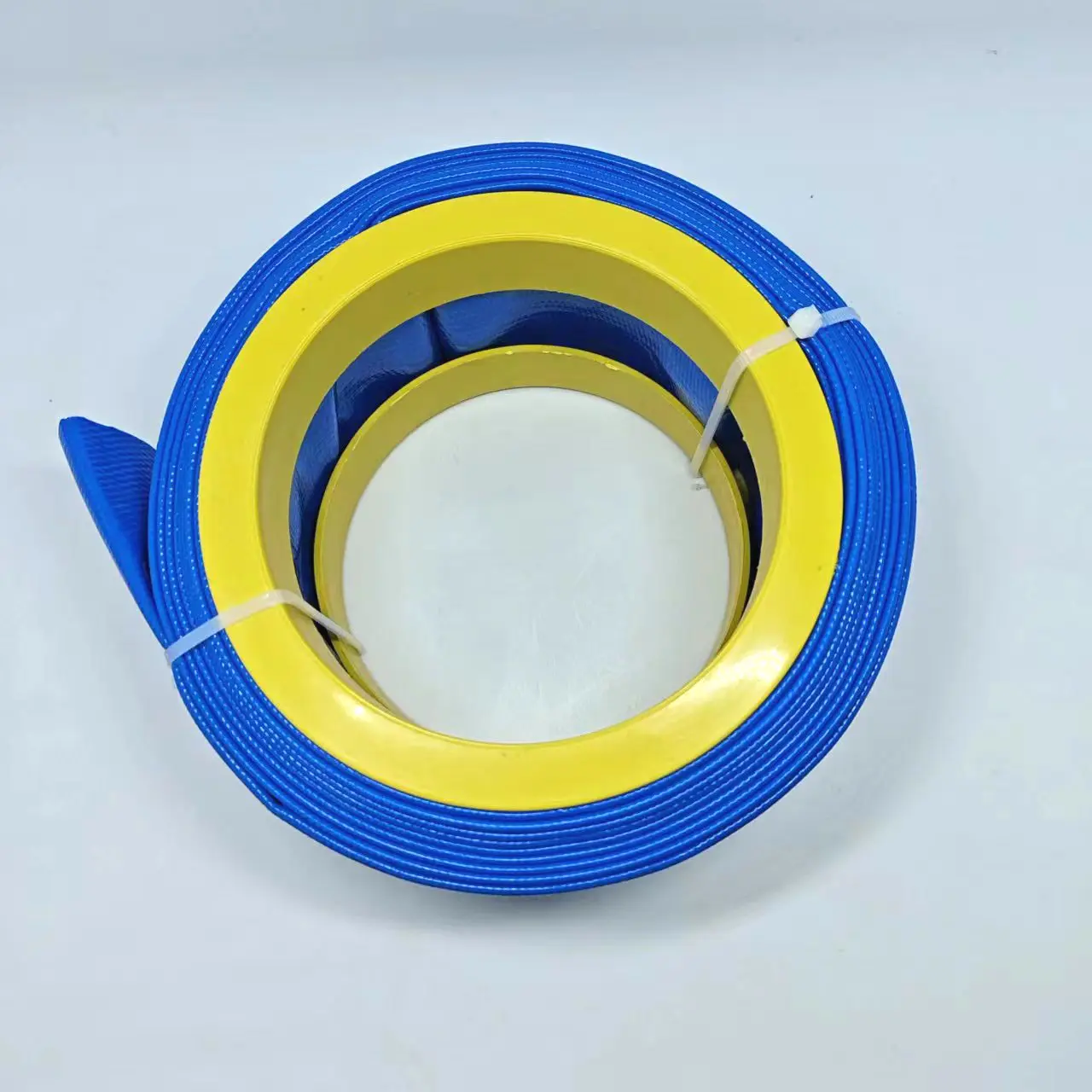
Product Specifications Comparison
Below is a comparison of common PVC Layflat Hose specifications for reference:
| Size (Inches) | Inner Diameter (mm) | Recommended Flow Rate | Example Applications |
|---|---|---|---|
| 2" | 50 | Low to medium flow | Small farms, garden watering |
| 3" | 75 | Medium flow | Orchard irrigation, construction sites |
| 4" | 100 | Higher flow | Large farms, drainage projects |
| 6" | 150 | High flow | Large-scale drainage, emergency pumping |
Note: Select the appropriate size based on water source pressure and pump capacity for optimal performance.
Usage and Maintenance
(1) Proper Installation
When laying out the hose, keep it as straight as possible to minimize water flow resistance. Avoid sharp bends to prevent deformation.
(2) Avoid Sharp Objects
Keep the hose away from sharp rocks, metal debris, or other objects that could puncture or damage it, especially in construction sites or rocky terrains.
(3) Regular Cleaning
After use, rinse the hose with clean water to remove sediment or debris, preventing buildup that could affect future use.
(4) Storage Tips
Drain all water and store the hose folded or rolled in a cool, dry place away from direct sunlight or high temperatures to prevent material degradation.
(5) Inspection and Replacement
Regularly check for cracks, punctures, or excessive wear. Replace or repair damaged sections promptly to maintain performance.
Frequently Asked Questions
Q1: How to prevent the hose from tangling during use?
A: Lay it out straight and avoid sharp bends or excessive pulling to minimize tangling.
Q2: What water pressure can the hose withstand?
A: It is designed for low-pressure applications. Refer to product specifications or consult the supplier for pressure limits.
Q3: How to connect the hose to a water pump?
A: Standard hose connectors or clamps can be used to ensure a secure, leak-free connection.
Q4: Will the hose crack in freezing temperatures?
A: PVC material may become brittle in cold weather. Drain the hose and store it indoors during winter to prevent freezing damage.
